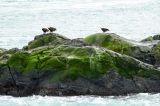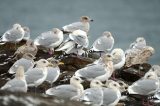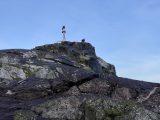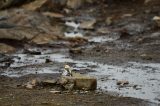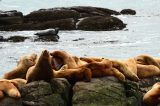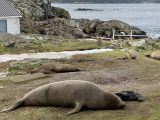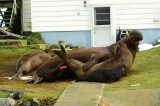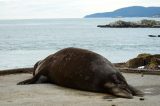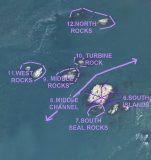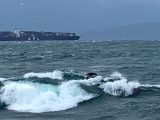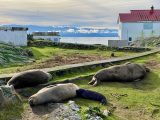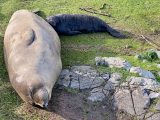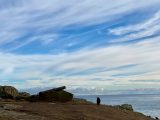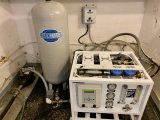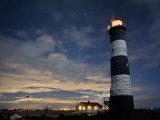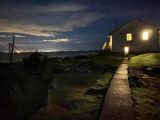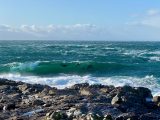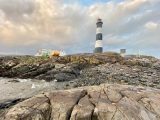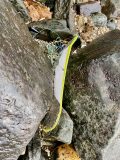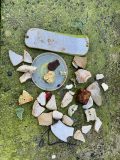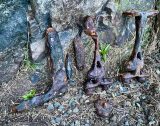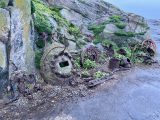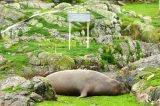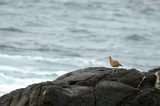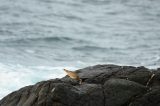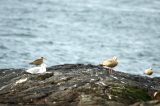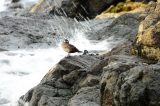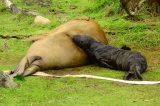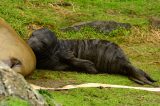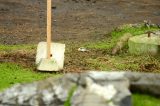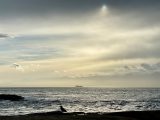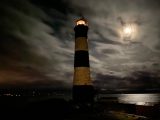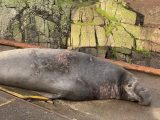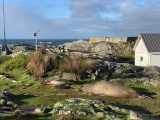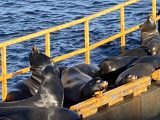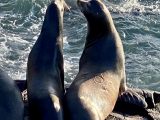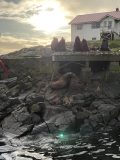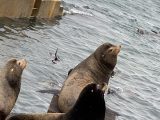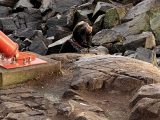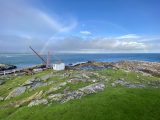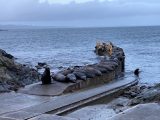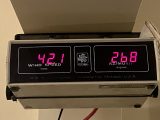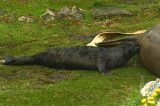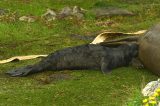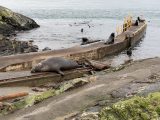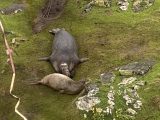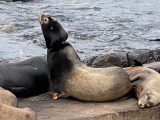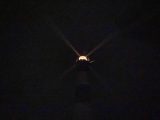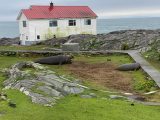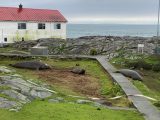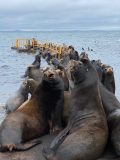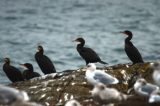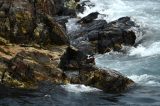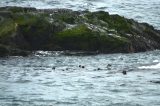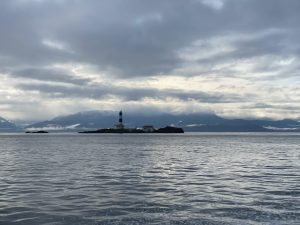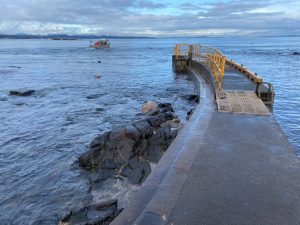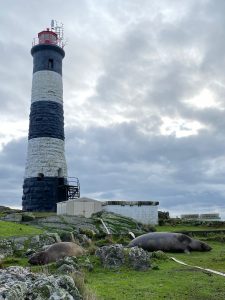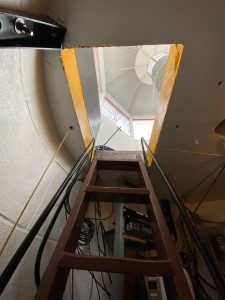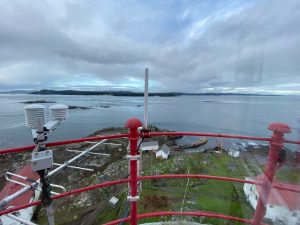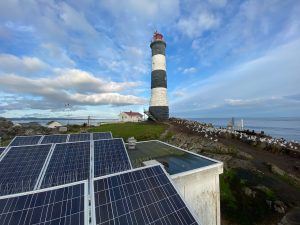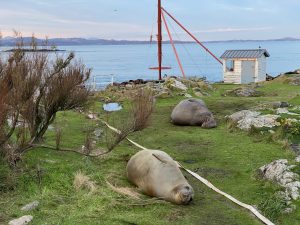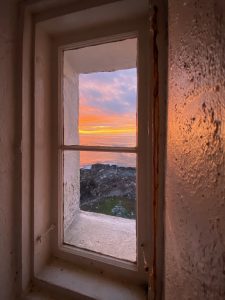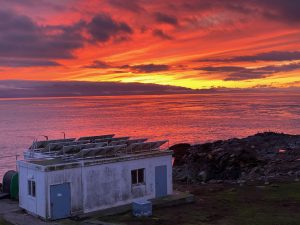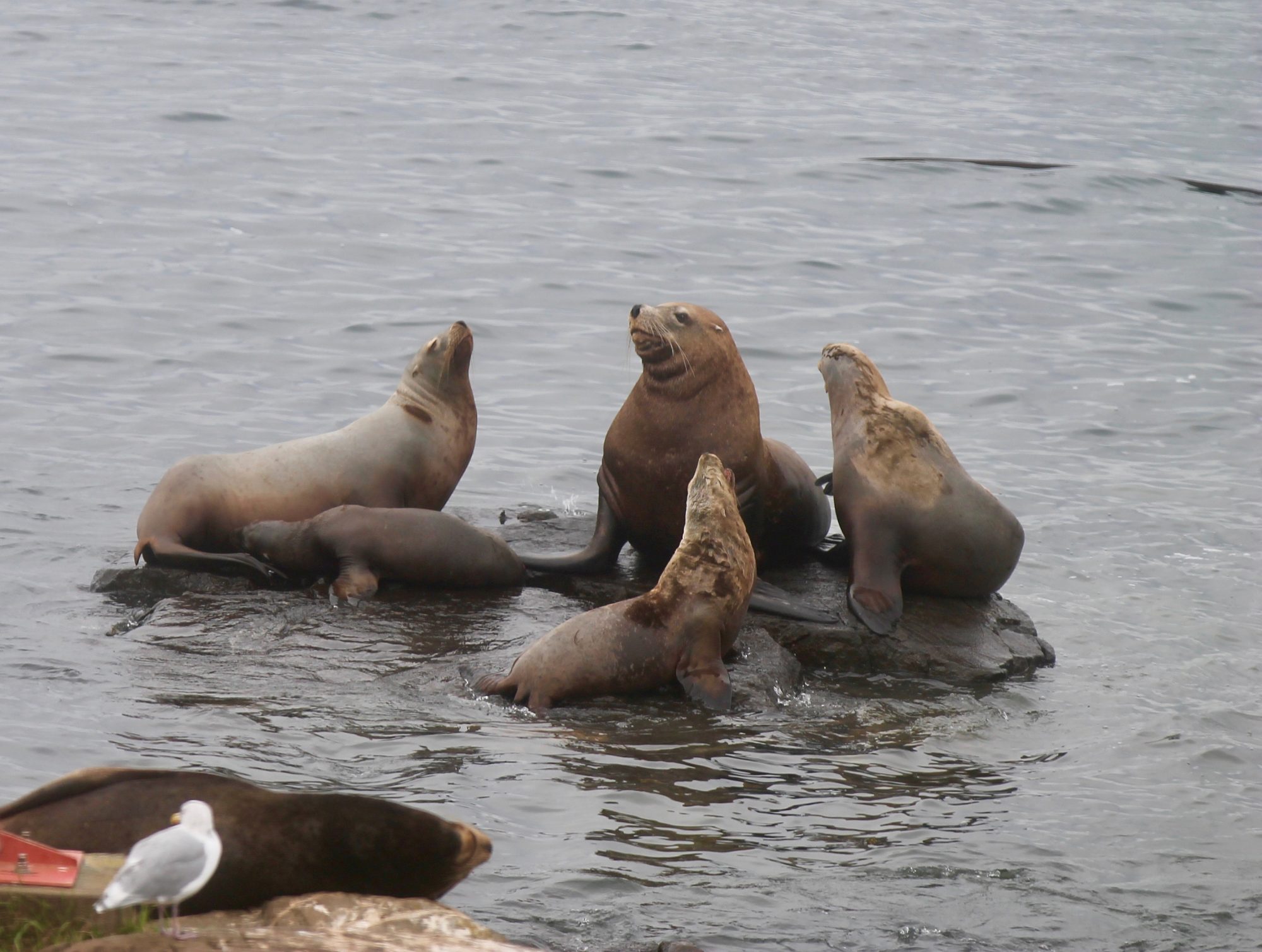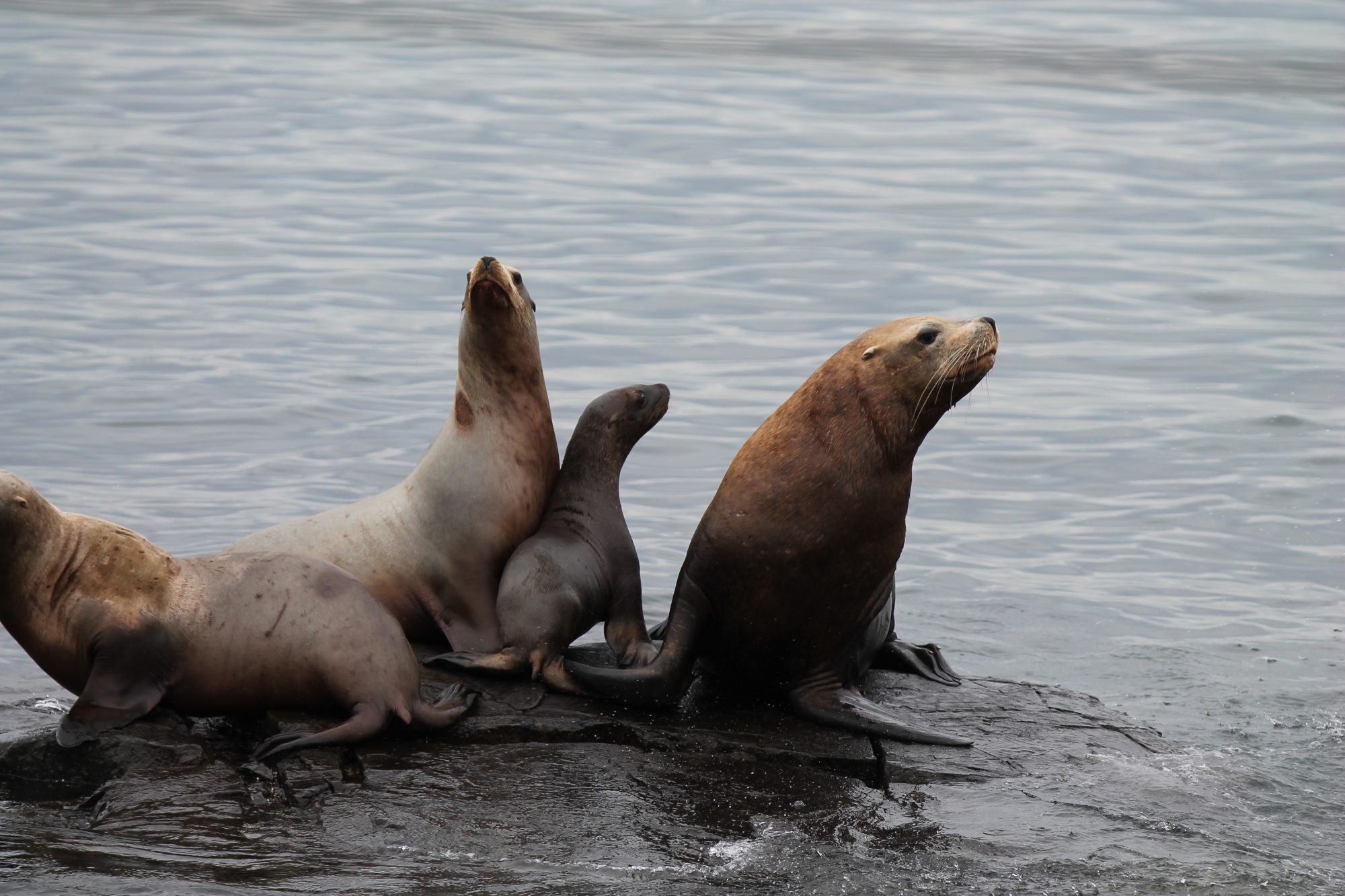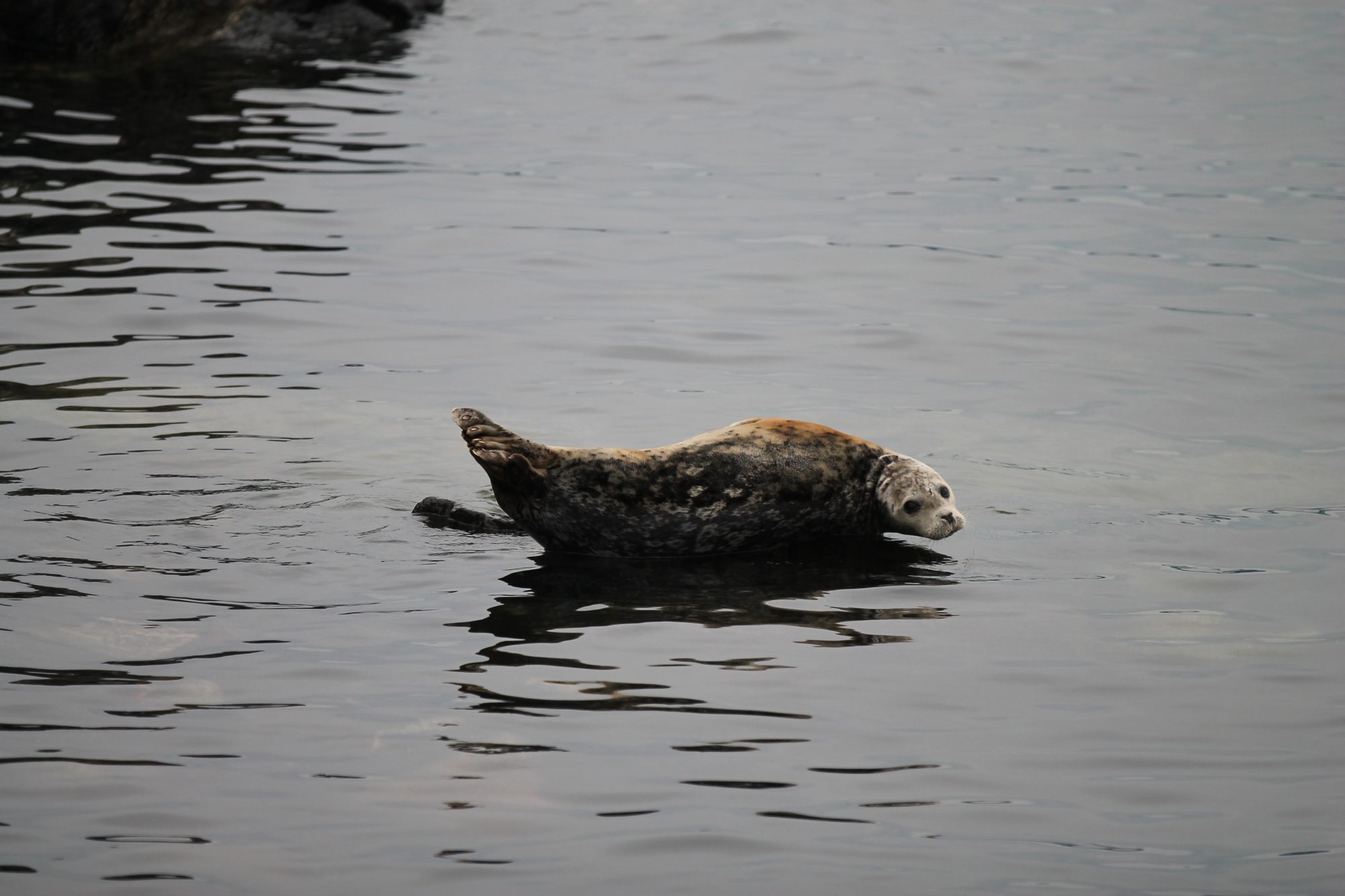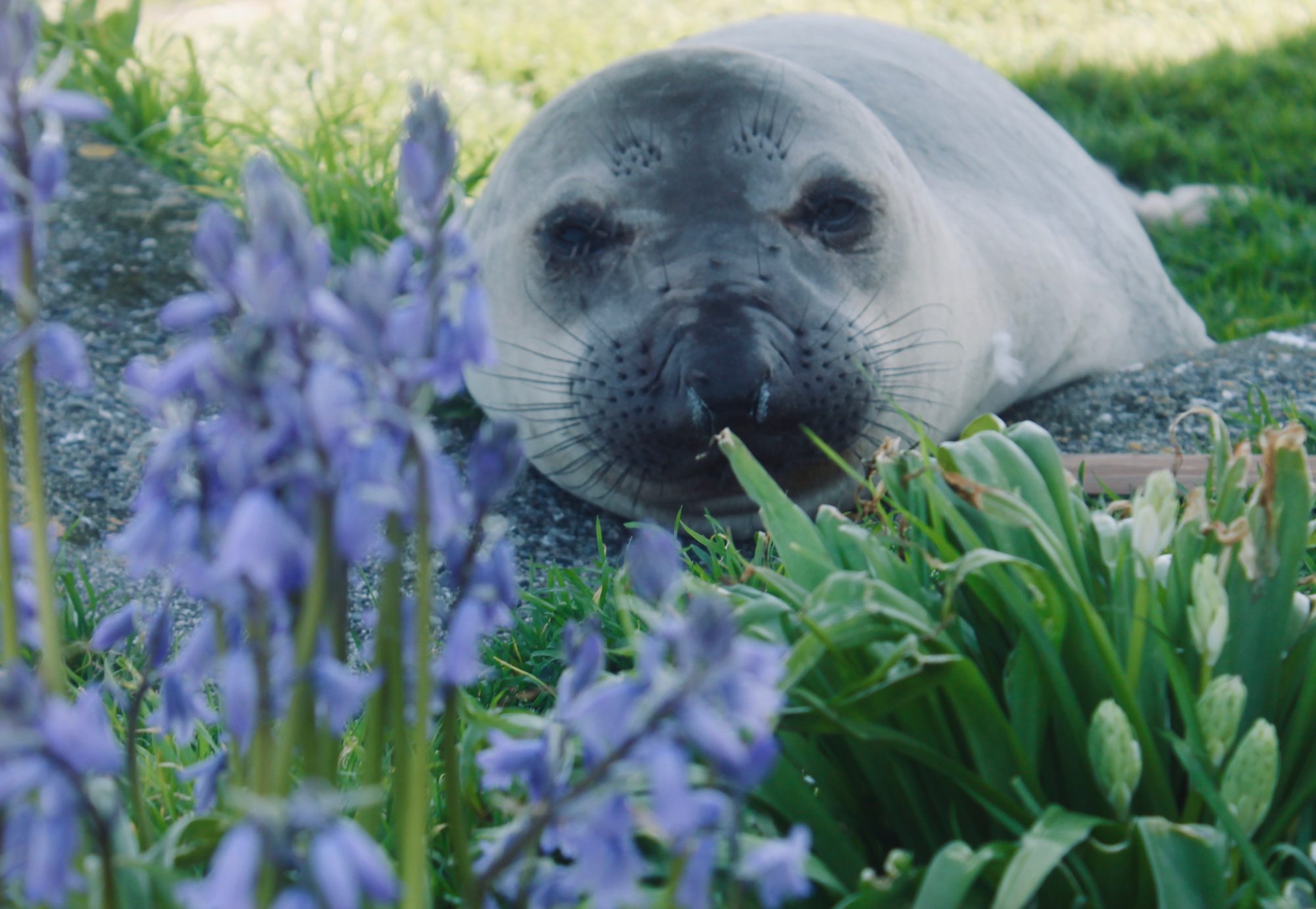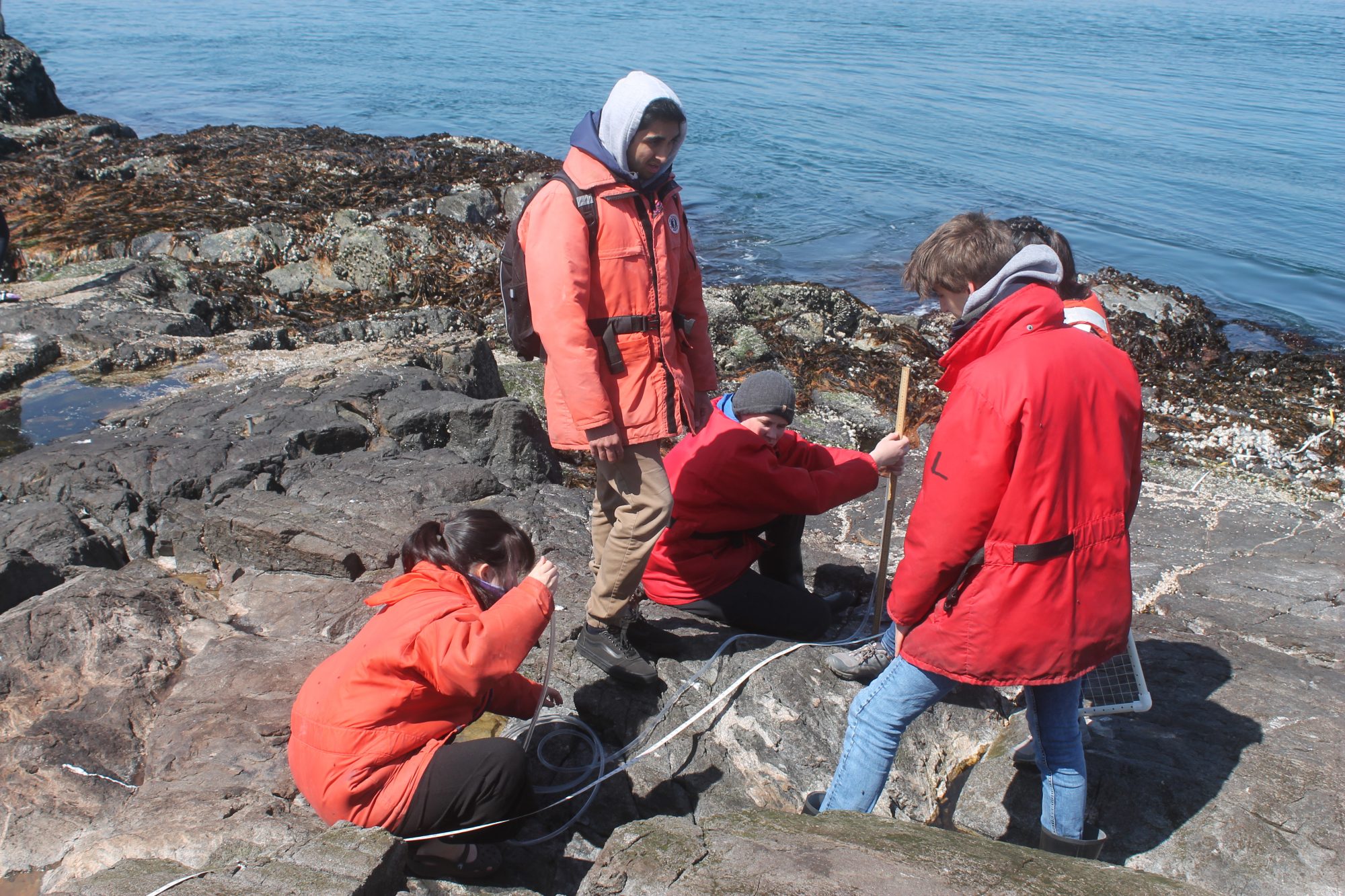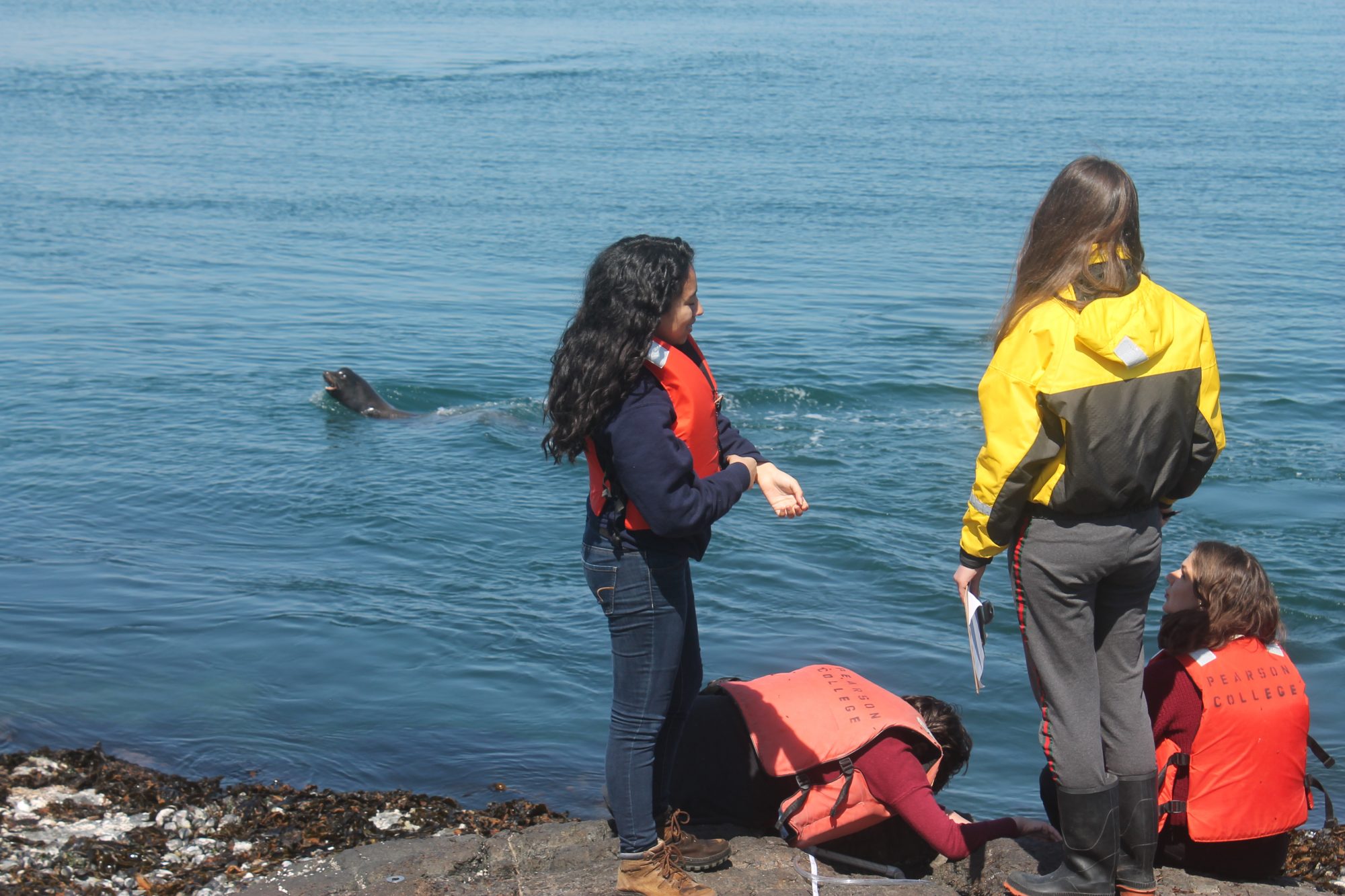Wind: yesterday 8-33 knots S to W, today 2-24 knots W to NE
Sea State: rippled
Visibility: 10-15 NM
Sky: both days mixture of sun and clouds
Temperature: yesterday 3 to 8 °C, today 2 to 4 °C
Atmospheric CO2: 412.63 ppm (recorded by NOAA at Mauna Loa Observatory, Hawaii)
The snow is melting quickly, bringing puddles and mud.
The one day old elephant seal pup appears to be doing well and nursing a lot. It’s moving around and wiggling more than the other two did in their first couple days. The alpha male has been mating numerous times with the mother of the oldest pup.
In the early afternoon, I wandered around the island and peered out from the top of the tower to count the mammals and birds. There were some notable omissions in this fourth week of conducting the census. I didn’t see any geese today. The only sign of the honking birds was a lot of poop and tracks in the snow. I also did not see any black oystercatchers. It is possible the birds were scared off by the loud explosions. The Armed Forces were blasting yesterday and today at the Department of National Defence land-based demolition range on Bentinck Island, the closest land to Race Rocks. Directly after each blast, I witnessed sea lions stampeding into the water and birds taking flight. According to a 2017 article On the firing line with the navy, in the Victoria newspaper Times Colonist, the detonation range is used for training members of the Canadian Navy on how to use explosives. The navy has apparently made efforts to lessen the effects on marine life.
Results of the weekly megafauna and bird census:
10 elephant seals (4 females, 4 males, 2 pups)
200 steller sea lions
242 california sea lions
107 harbour seals
8 bald eagles (7 adult, 1 juvenile)
56 brandt’s cormorants
124 pelagic cormorants
43 double-crested cormorants
178 Thayer’s gulls
12 harlequin ducks
9 black turnstones
1 snow bunting
- Three bald eagles perched on one of the South Islands
- Thayer’s gulls
- Two bald eagles on the highest point of land on the island, where camera 5 looks out
- Snow bunting
- Steller sea lions hauled out in a cuddle puddle on South Seal Rocks. In the background, a harbour seal lays on a rock in the intertidal zone.
- The newest elephant seal mother and pup
- Elephant seals mating while the oldest of the three pups barks.
- A male elephant seal lying on the helicopter pad facing out to the open Pacific. Of the three beta male elephant seals, this one has the most battle scars.
- This annotated satellite map shows the names of the different rocks as well as the sectors for marine biology studies.

